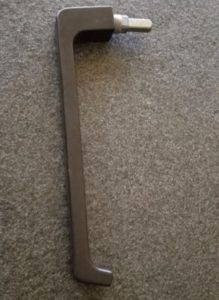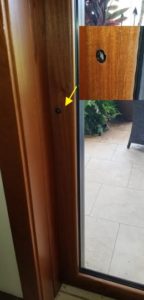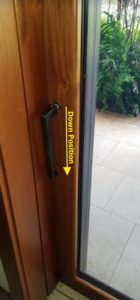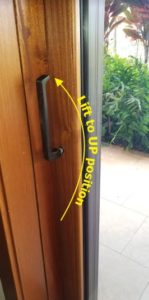Hurricane Preparedness

Aloha all,
Hurricane Season begins June 1 and runs through November 30th. Education and Preparation are our biggest assets in preventing and/or reducing property damage and possible life loss. Our team here at Beach Villas has already undergone a Hurricane Preparedness Training class taught by Interstate Hawaii, the local arm of the national Interstate Restoration Company, disaster recovery experts. In preparation, we also already have a Hurricane Plan that includes a preparation checklist +72 hrs, +48 hrs, +36 hrs, +24 hrs, +12 hrs, +6 hrs in advance of an incoming hurricane striking landfall. We are ready. For your reference we have our recommended:
- Villa Checklist
- Detailed Emergency Supply list
Villa Checklist:
- Lanai pocket doors locked: this prevents water from leaking underneath pocket doors.
- Lanai furniture and artificial palms/plants secured indoors: high winds are expected and loose furnishings are a safety hazard.
- Owners, please consider bringing in your lanai furniture and loose items when you are away from your villa for extended periods of time.
- Basic Emergency Supplies: (detailed list below)
Tool Needed:

Pocket Door Locking Key/Handle (available through Maintenance Dept for $156.25 at [email protected])
To Lock the Pocket Door

Step 1: locate the keyhole in the pocket door

Step 2: insert the Pocket Door Locking Key/Handle in the DOWN position (note image)

Step 3: lift handle into the UP position which will lock the pocket door.
NOTE: to unlock the pocket door, reverse the steps above.
Key Notes
- In the case of power failure, the Emergency generator will automatically start and power up egress lighting in the halls and stairwells.
- Elevators will recall to the 1st floor and doors will open then one elevator in each bank will run on Emergency power.
- Fire Pump will have power.
- There will be no domestic water, hot water, and air conditioning.
Please feel free to use the following guidelines as recommended by FEMA and READY.GOV for your guests and villas:
Basic Disaster Supplies Kit
To assemble your kit, store items in airtight plastic bags and put your entire disaster supplies kit in one or two easy-to-carry containers such as plastic bins or a duffel bag.
A basic emergency supply kit could include the following recommended items:
- Water – one gallon of water per person per day for at least three days, for drinking and sanitation
- Food – at least a three-day supply of non-perishable food
- Battery-powered or hand-crank radio and a NOAA Weather Radio with tone alert
- Flashlight
- First aid kit
- Extra batteries
- Whistle to signal for help
- Dust mask to help filter contaminated air and plastic sheeting and duct tape to shelter-in-place
- Moist towelettes, garbage bags and plastic ties for personal sanitation
- Wrench or pliers to turn off utilities
- Manual can opener for food
- Local maps
- Cell phone with chargers and a backup battery
- COVID-19: Face coverings
- COVID-19: Gloves
Download the Recommended Supplies List (PDF)
Additional Emergency Supplies
Consider adding the following items to your emergency supply kit based on your individual needs:
- Prescription medications
- Non-prescription medications such as pain relievers, anti-diarrhea medication, antacids or laxatives
- Glasses and contact lens solution
- Infant formula, bottles, diapers, wipes, diaper rash cream
- Pet food and extra water for your pet
- Cash or traveler’s checks
- Important family documents such as copies of insurance policies, identification, and bank account records saved electronically or in a waterproof, portable container
- Sleeping bag or warm blanket for each person
- Complete change of clothing appropriate for your climate and sturdy shoes
- Household chlorine bleach and medicine dropper to disinfect water
- Fire extinguisher
- Matches in a waterproof container
- Feminine supplies and personal hygiene items
- Mess kits, paper cups, plates, paper towels, and plastic utensils
- Paper and pencil
- Books, games, puzzles or other activities for children
Maintaining Your Kit
After assembling your kit remember to maintain it so it’s ready when needed:
- Keep canned food in a cool, dry place
- Store boxed food in a tightly closed plastic or metal containers
- Replace expired items as needed
- Re-think your needs every year and update your kit as your family’s needs change.
Kit Storage Locations
Since you do not know where you will be when an emergency occurs, prepare supplies for home, work and vehicles.
- Home: Keep this kit in a designated place and have it ready in case you have to leave your home quickly. Make sure all family members know where the kit is kept.
- Work: Be prepared to shelter at work for at least 24 hours. Your work kit should include food, water and other necessities like medicines, as well as comfortable walking shoes, stored in a “grab and go” case.
- Vehicle: In case you are stranded, keep a kit of emergency supplies in your car.
(Sources: https://www.noaa.gov/media-release/noaa-predicts-above-normal-2019-hurricane-season-in-central-pacific; https://www.ready.gov/build-a-kit; https://www.fema.gov/news-release/2018/08/16/proper-emergency-kit-essential-hurricane-preparedness)
